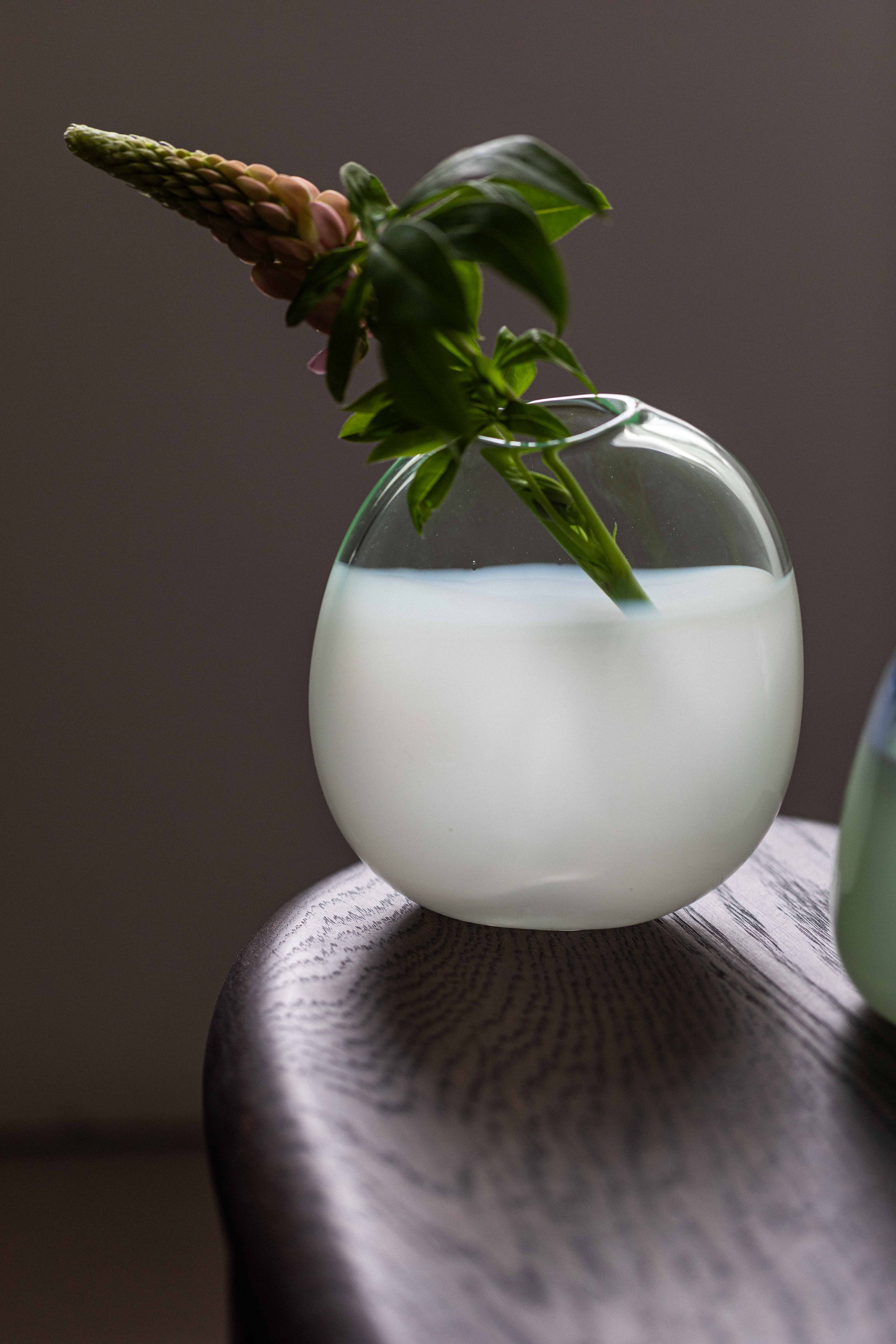An Interview with Michèle Oberdieck
Michèle Oberdieck tells us more about her process and practice, ahead of her showcase at Flow in autumn 2024.
11th September – 30th October
Interview by Alina Young. Flow photography by Isobel Napier; Studio photography by Sylvain Deleu
What is your process for developing designs?
I start by sketching and painting from found objects, mainly from nature, redrawing and painting them until I feel they’re right.
I then model them in clay to see the actual depth the piece might involve.
It’s better to have a 3D visualisation for a form before going into the hot shop as once we start working with hot glass, decisions have to be made very quickly.
There’s no time to pause and rethink a piece. We work in the moment.
Each step of planning and making involves an editing phase. Like the material, I tend to work quite fluidly, changing certain perspectives when they become apparent.
Could you tell us about the relationship between your design process and making the works in the hot shop?
With the slower design process, I digest the idea over time.
The immediacy of making in the hot shop is more instinctual, and intrinsic.
Without one you couldn’t have the other.
How do your ideas for colours translate to the finished piece?
I work quite a bit with watercolour paint as it has an immediacy which translates well with blown glass. I look at a lot of fine arts and painting.
I then match glass colours to my sketches. Coloured glass, however, contains metal oxides which react differently under different temperatures. I always sample my glass pieces first before executing them.
I find it quite thrilling when another colour appears due to the reactions of two colours together, which may then change my original ideas for a piece.
Could you tell us about the techniques you use for creating colour and shaping the pieces?
I use rods of coloured glass which I then cut into pieces, depending on the intensity I’m after. These are heated up in the furnace and coated with a gather or layer of clear glass, often two layers. As the form is blown larger, each colour expands or contracts depending on how soft or hard the colour is. Unlike other materials, with glass the form and colour evolve simultaneously.
I hand-shape the pieces using wads of damp newspaper to protect my hands against the heat. It feels more personal shaping the glass forms this way rather than using moulds, as I feel it creates more character.
© Michèle Oberdieck
How do you find inspiration for the fluid, asymmetrical forms of your pieces?
My inspiration for the asymmetrical forms is mainly found in nature.
I’m always surprised how much weather, sea and other natural elements shape natural material.
While walking along Fossil Bay near Margate, I was amazed at how many miniature Henry Moore’s and Jean Arp sculptures I could see in the stones.
How do their forms interact with colour?
Colour has always been a major source for me.
There’s an infinite number of gradations and tones when looking at a water source or the sky, or the way colours bleed and fade when plant life starts to decay.
The forms interact with colour by the way light reflects across the shape and illuminates it.
Light with colour creates another dimension.
Light is integral to your work – do you design with light in mind? What do you find interesting about the interaction of light with the finished piece?
Light and glass are the perfect marriage. Light is integral to glass and has the capacity to change it both drastically and minimally. It compliments glass to no end.
What’s wonderful about how a glass object is the way it can change throughout the day.
From morning to dusk, the same object can look completely different depending on the light source.
What looks opaque can look transparent, what appears dark and all one tone, with sunlight a completely different hue can appear.
Browse all by Michèle Oberdieck














